Planting for Coastal Environments
Ensuring resilient green spaces in seaside plantings
Coastal landscapes present some of the most unique challenges for planting schemes, yet they also offer opportunities for creating resilient and distinctive designs. For centuries, coastal plants have adapted to thrive in conditions that many other species would find difficult, from windswept dunes to salt-laden air and sandy soils. These environments may appear harsh, but with careful plant choice they can be transformed into thriving, attractive spaces that bring colour, texture, and biodiversity to seafront gardens, public landscapes, and commercial sites.
Understanding the particular demands of coastal environments is key to successful planting. Unlike inland gardens, coastal sites often experience a combination of exposure, high winds, salt spray, poor soil fertility, and free-draining substrates. Plants that flourish in these conditions typically share a set of traits that enable them to cope with such stressors. By recognising these traits and choosing suitable species, designers can create planting schemes that are not only beautiful, but also sustainable and long-lived.
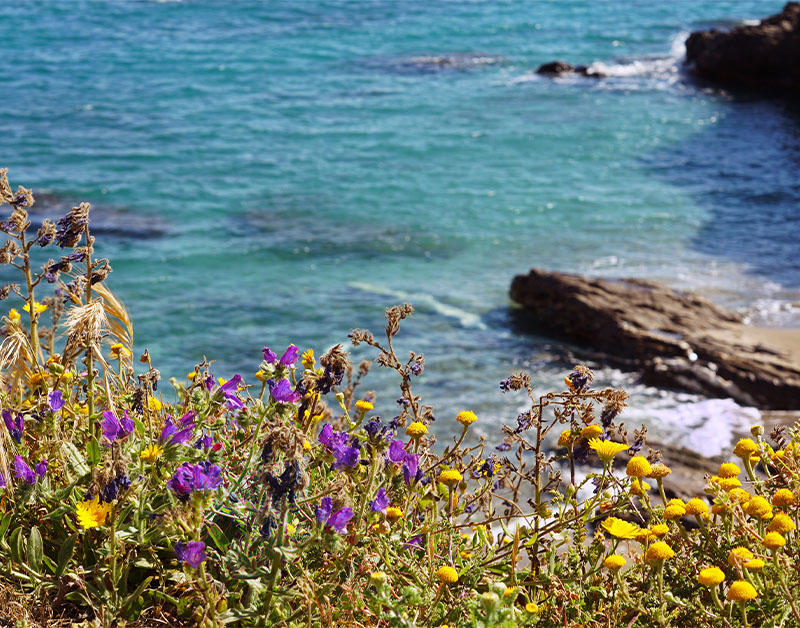
What defines a coastal environment?
In landscaping terms, a coastal environment refers to any site within close proximity to the sea, typically exposed to maritime weather patterns. These areas can range from dramatic cliff tops and sandy beaches to urban seafront developments or sheltered estuaries. While no two coastal sites are exactly alike, they share several common factors that directly influence planting choices.
Soils are often sandy or gravelly, providing excellent drainage but limited fertility. Clay soils can also be found in some coastal regions, but these too are prone to erosion and compaction under heavy rainfall. Winds are generally stronger and more consistent than inland, with salt spray carried directly onto plants. Seasonal conditions can also be more extreme, with cool sea breezes in summer and greater exposure to winter storms. All of these factors combine to make coastal planting a distinct design challenge.
There isn’t necessarily a defined boundary that indicates whether you’re in a coastal area or not, but rather it’s dependant on exposure to the effects of the coastline. Naturally protected areas closer to the sea might be less prone to the effects of the coast than exposed areas further away.
Challenges of coastal planting
Plants growing near the sea must contend with several stresses that make coastal conditions unlike most inland landscapes. One of the most significant is exposure to salt spray and persistent winds. Salt carried from the sea can coat leaves and young shoots, drawing moisture out of plant tissues and leaving them scorched or dehydrated. Strong winds compound this problem by physically damaging fragile stems and increasing the rate of water loss through transpiration.
Soil conditions create further challenges. Coastal soils are often sandy or gravelly, which means they drain quickly but hold very little moisture or nutrients. In these conditions plants can become stressed during dry periods, particularly in summer, and may struggle to establish without additional organic matter or irrigation. In some coastal regions clay soils are present, but these are easily compacted and prone to erosion in heavy rain, creating unstable ground for root systems.
The issue of erosion is particularly important along dune systems and exposed slopes, where shifting ground and loss of soil mean only plants with strong, anchoring root systems are able to survive. Coastal areas also offer little natural shelter. Unlike inland gardens bordered by hedgerows or woodlands, many seafront sites are open and exposed to the elements year-round. This lack of protection leaves plants with no buffer against wind, salt, or extreme weather, meaning only the most resilient species can truly thrive in these conditions.
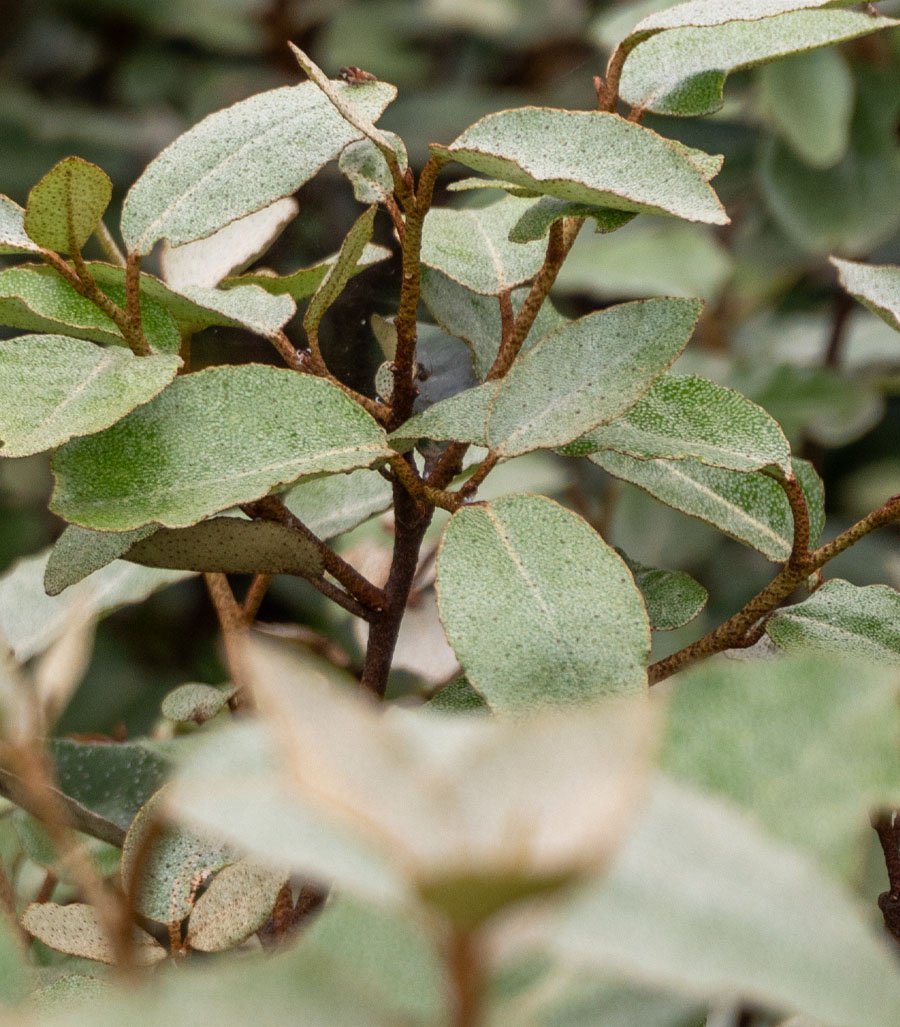
Elaeagnus × ebbingei – waxy silver leaves with a salt-tolerant shine
Traits of coastal-tolerant plants
To survive in coastal settings, plants have developed a set of traits that allow them to withstand salt, wind, and poor soils. One of the most common adaptations is the development of waxy or leathery leaves. These surfaces protect against salt burn and reduce the amount of water lost through evaporation, giving plants a better chance of survival in exposed conditions. Many coastal plants also have silvery or grey foliage, often with tiny hairs that reflect sunlight and create a protective layer to reduce water loss.
Flexibility is another key feature. Plants with supple stems are less likely to break under the force of strong winds, bending with the gusts instead of resisting them. This trait allows grasses and shrubs in particular to cope with continual exposure on cliff tops or open seafronts. Beneath the surface, coastal plants often rely on deep or fibrous root systems. These roots anchor them into shifting soils, such as dunes, while also allowing access to deeper reserves of moisture and nutrients that are not available near the surface.
Finally, most coastal plants are naturally tolerant of drought. Because sandy soils drain quickly and offer little in the way of fertility, plants must be able to cope with limited water availability. Drought tolerance, combined with protective foliage, flexible growth, and strong roots, creates a plant that is capable of not just surviving but thriving in the unique challenges of a coastal environment.
Recommended plants for coastal landscapes
Herbaceous
Geranium sanguineum
Hardy, low-growing perennial with bright magenta-pink flowers and finely divided green foliage. Tolerant of wind, salt, and poor soils, making it ideal for coastal planting. Provides long-lasting colour and works well as groundcover in mixed schemes.
Potentilla fruticosa ‘Elizabeth’
A compact, spreading shrub with grey-green foliage and a profusion of bright yellow saucer-shaped flowers from late spring until autumn. It’s a robust plant that is tolerant of most soil types, salty air, and drought. Adds a pop of colour to sunny borders.
Verbena bonariensis
Tall, airy perennial with slender stems and small clusters of purple flowers through summer into autumn. Attractive to pollinators and withstands exposure. Useful for bringing vertical interest to coastal borders.
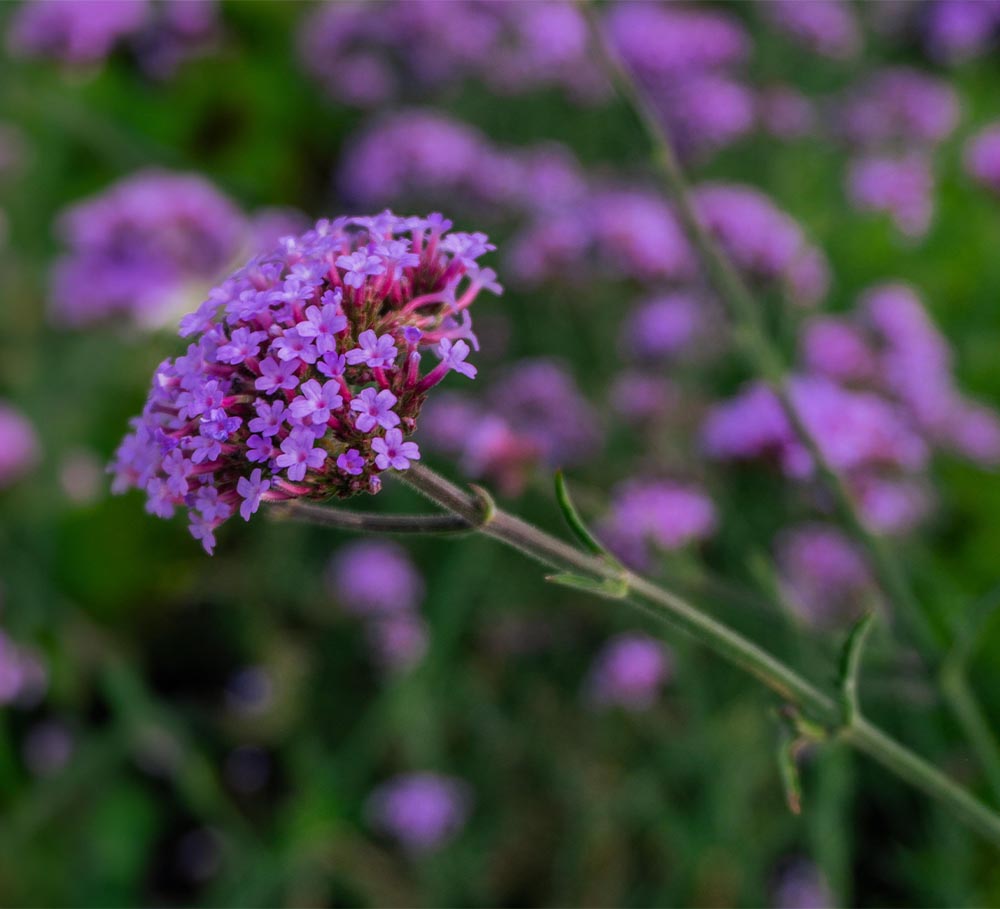
Verbena bonariensis
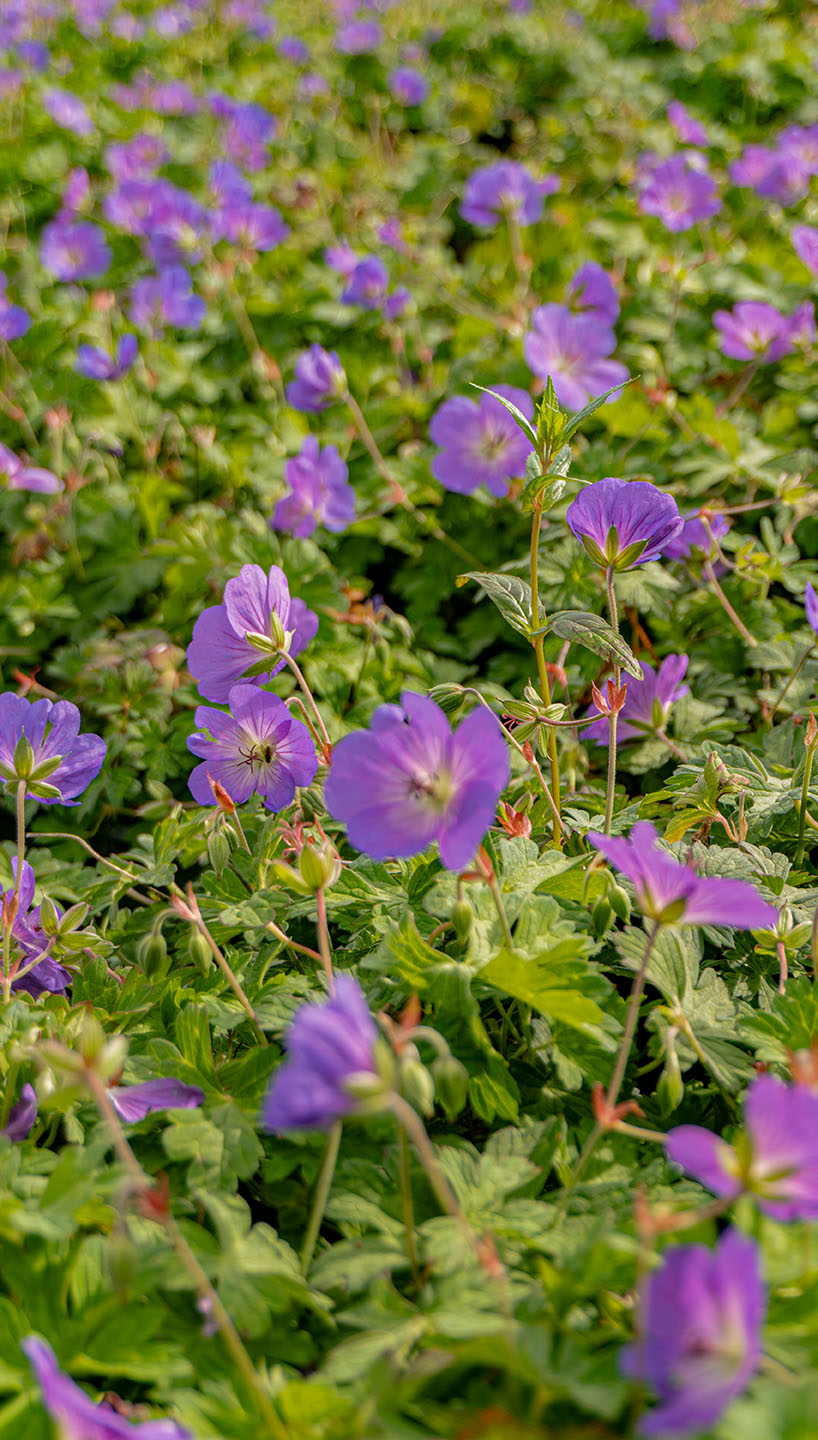
Geranium sanguineum
Shrubs
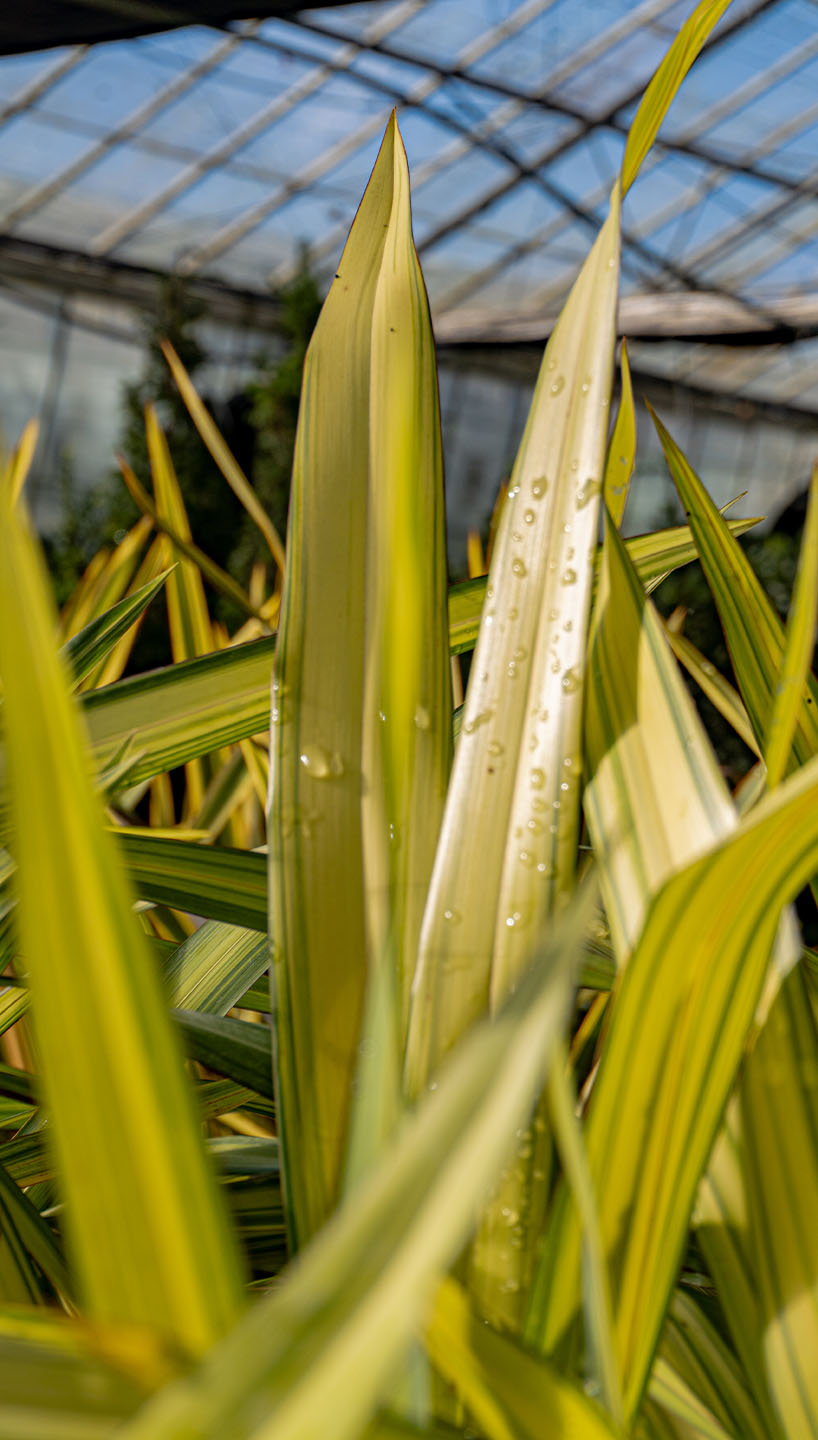
Phormium ‘Yellow Wave’
Elaeagnus × ebbingei
Evergreen shrub with leathery, silvery-green foliage. Small, fragrant flowers in autumn followed by orange-red fruits. Extremely resilient to wind and salt spray, making it a reliable choice for screening in coastal landscapes.
Phormium ‘Yellow Wave’
Evergreen perennial with bold, sword-like leaves in green and yellow. Strong architectural form, ideal for adding structure and year-round colour. Tolerant of wind, salt spray, and poor soils, making it excellent for coastal planting. Low-maintenance and reliable in mixed schemes.
Euonymus japonicus ‘Bravo’
Evergreen shrub with variegated green and creamy-yellow foliage. Dense and compact habit, well-suited for hedging or structural planting. Tolerant of coastal winds and poor soils, providing reliable year-round colour.
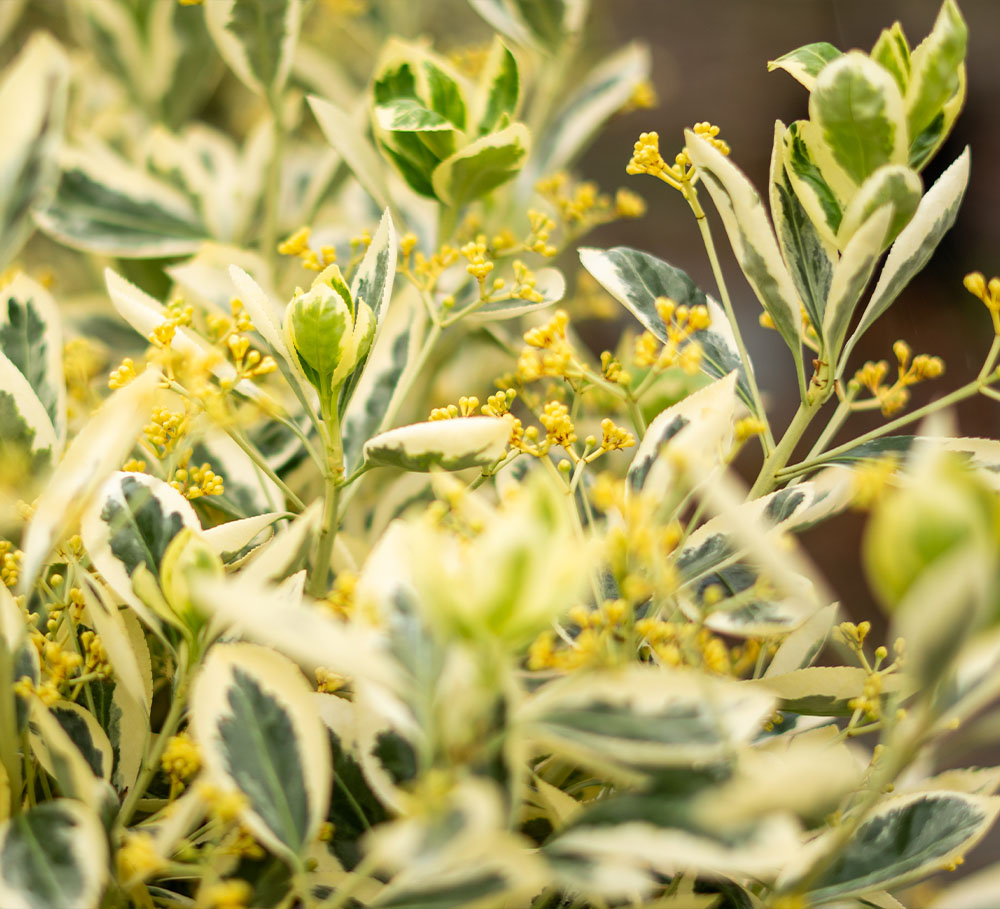
Euonymus japonicus ‘Bravo’
Trees
Alnus glutinosa
Deciduous tree suited to wetter coastal areas. Glossy green leaves, catkins in spring, and small woody cones in winter. Valuable for stabilising soil and supporting wildlife.
Griselinia littoralis
Evergreen shrub with glossy, bright green leaves and dense growth habit. Excellent for hedging and shelter, especially in coastal locations due to its strong tolerance of wind and salt spray. Fast-growing, low-maintenance, and provides reliable year-round cover.
Acer pseudoplatanus
Large, hardy deciduous tree with broad, green leaves that turn golden in autumn. Extremely tolerant of wind, pollution, and salt, making it well-suited to exposed or coastal sites. Provides excellent shade, structure, and long-term landscape value.
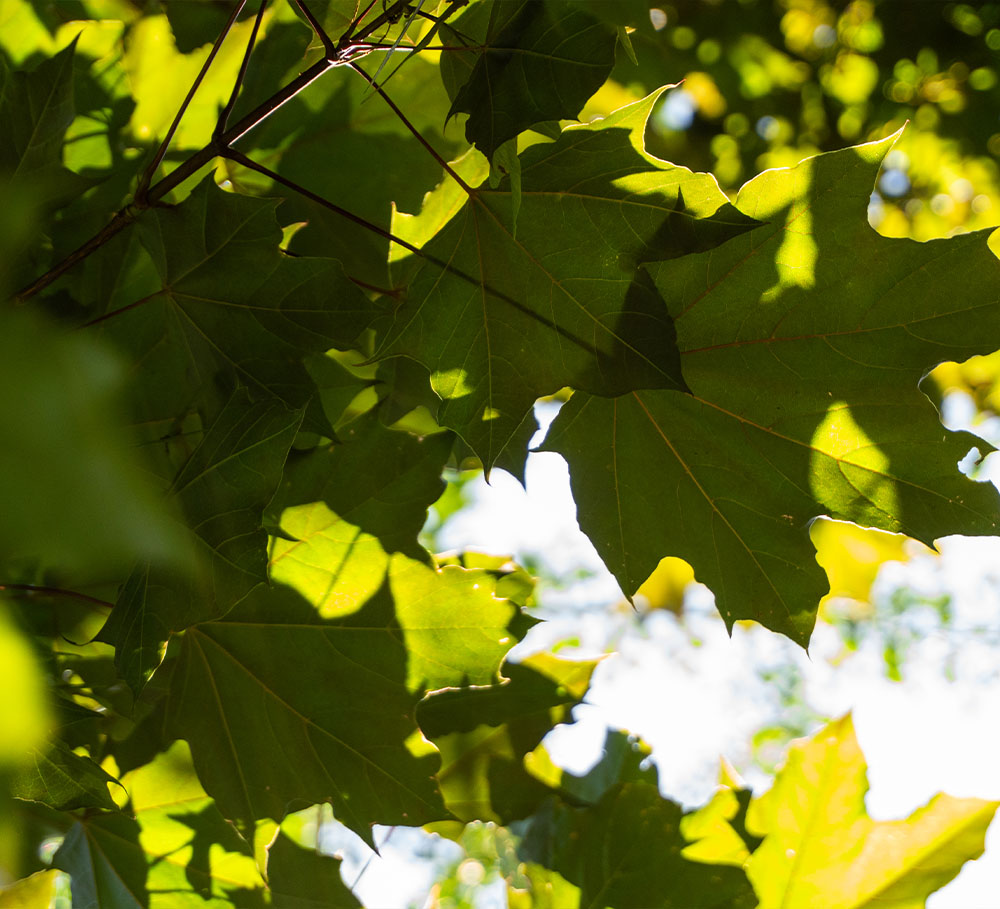
Acer pseudoplatanus
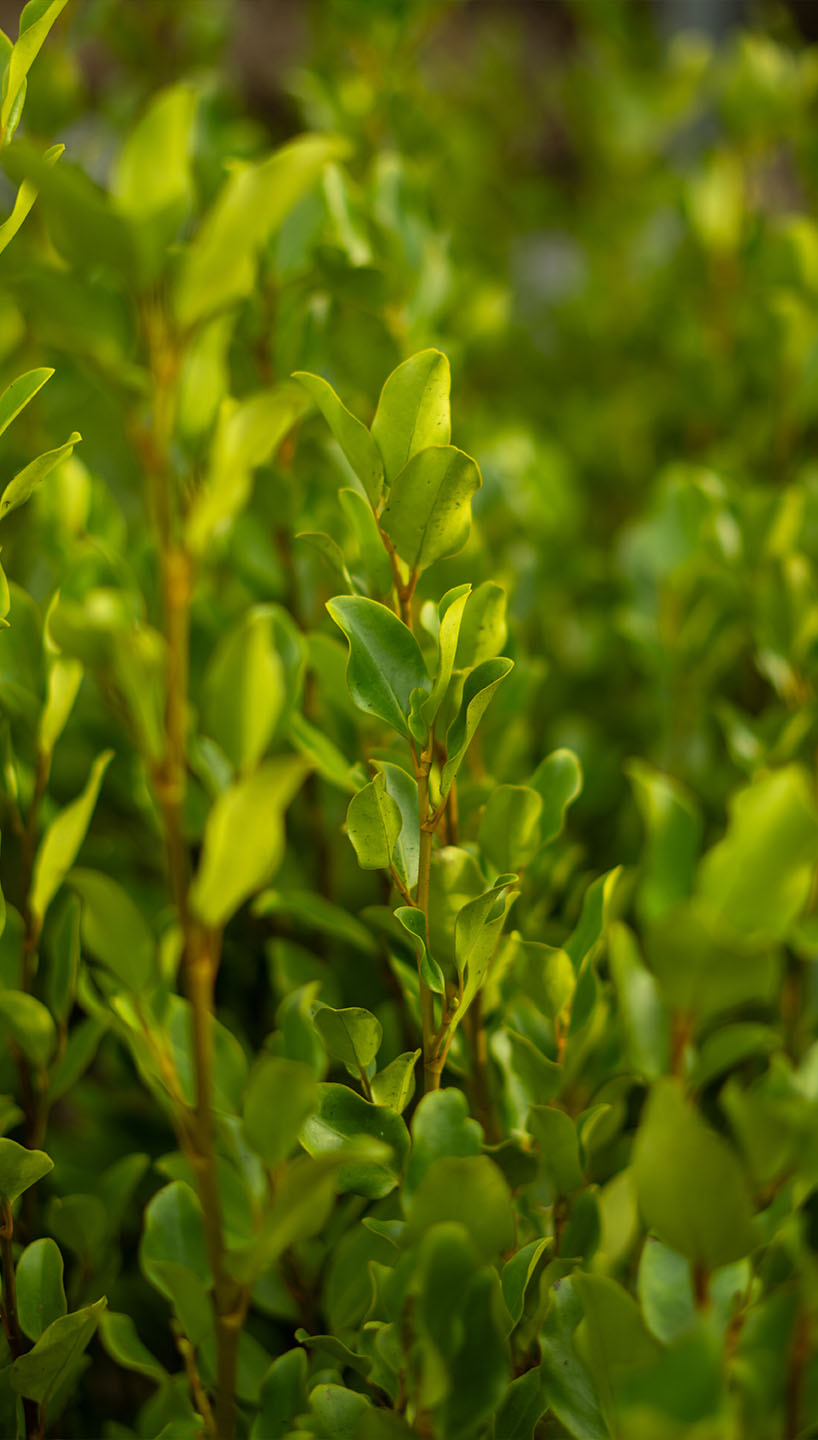
Griselinia littoralis
Design tips
Planting in coastal environments is about balancing resilience with aesthetics. Designers often combine tough, structural shrubs or trees to provide shelter, with more delicate herbaceous perennials to bring seasonal interest. Grasses and groundcover species can be used to stabilise sandy soils, while evergreen foliage provides year-round structure.
Drift planting, repeating groups of the same species, is particularly effective in coastal schemes, echoing the natural rhythm of dune and cliff landscapes. Colour palettes often lean towards silver, grey, and muted tones, with splashes of bright flower colour in spring and summer.
It is also important to consider microclimates. Even within exposed areas, sheltered pockets can support more tender plants. Windward edges must be planted with the most resilient species, while inner areas benefit from shelter. Creating shelter belts of hardy shrubs or trees can dramatically improve conditions for less tolerant species behind them.
Coastal environments bring unique challenges, but with the right plant selection they can also deliver striking, resilient, and biodiverse landscapes. By choosing species that are naturally adapted to salt, wind, and poor soils, designers can create schemes that thrive in even the most exposed locations.
For more inspiration, check out our coastal tolerant planting inspiration by clicking here.

